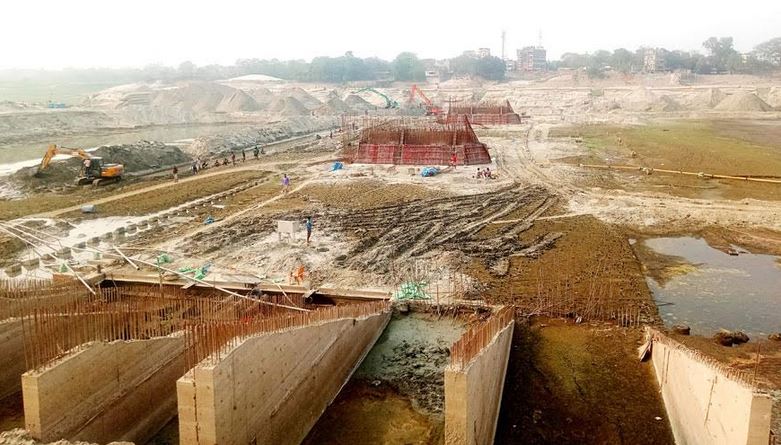
RAJSHAHI, Feb 19, 2023 (BSS) - The under-construction rubber dam in the
Mahananda river has been showing immense prospects of boosting production of
agriculture and fisheries in Chapainawabganj district.
The ever largest rubber dam scheme in the country is being constructed in
order to bring back navigability of the river and more than 7,500 hectares of
farming fields under irrigation.
Bangladesh Water Development Board (BWDB) has been implementing the scheme
with an estimated cost of around Taka 187.32 crore. There will be a
revolutionary change in the region's agriculture sector on successful
implementation of the project.
Dockyard and Engineering Works Limited, a commercial entity being operated by
Bangladesh Navy, is constructing the dam 500 yards downstream of Birshrestha
Captain Mohiuddin Jahangir Bridge at Chapainawabganj town.
According to the sources concerned, the vast Barind tract is being turned
into a waterless condition due to various natural and manmade catastrophes
like constructing barrage, reduction of annual rainfall and climate change.
As a result, crop reduction is gradually being surfaced. In the adverse
situation, demand for rubber dam construction has been mounted for the best
uses of river water for irrigation purposes.
At a huge public meeting in Chapainawabganj on April 23, 2011, Prime Minister
Sheikh Hasina had given an assurance of rubber dam construction on Mohananda
River responding to the local demands.
Later on, BWDB adopted a project titled "Rubber Dam Construction and River
Dredging in Mohananda" for implementation of the Prime Minister's
announcement.
BWDB Sub-divisional Engineer Moyez Uddin here told BSS that the ever largest
rubber dam scheme is being implemented in Mahananda River. 36 kilometer
areas, 10 kilometers upstream and 26 kilometers downstream of the 353-
kilometer proposed dam are being brought under dredging.
Upon successful implementation of the scheme, more than 7,500 hectares of
land will be brought under irrigation in surrounding areas.
In this connection, he said, the retained water could easily be used for
supplementary irrigation of Aman, wheat, pulse, oil seeds and vegetables
cultivation along with pisciculture and duck farming.
It will also create employment opportunities for the day labourers and
marginal farmers and living and livelihood conditions of the farmers' is
likely to improve through crop production.
As a whole, the scheme will facilitate boosting round the year surface water
uses for irrigation purposes. Engineer Moyez said, adding it would also help
to improve the environment there, a common concern of the area.